YOU ARE LEARNING:
Polygenic Variation
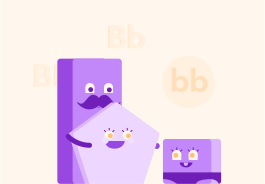
Polygenic Variation
Most traits are controlled by multiple genes rather than a single gene. Punnett squares can be made for multiple gene crosses, but other genetic diagrams are more useful in single gene crosses.
So far, we have worked with traits that have been controlled by a single gene. However, most traits in fact are controlled by multiple genes interacting. Characteristics controlled by multiple genes are usually continuous.
What do you think polygenic variation means?

Example of polygenetic traits are skin colour, height and weight in humans, or beak size in birds like finches.
First, let's remind ourselves what a single gene cross looks like.
Here are Punnett squares showing genetic crosses for eye colour.
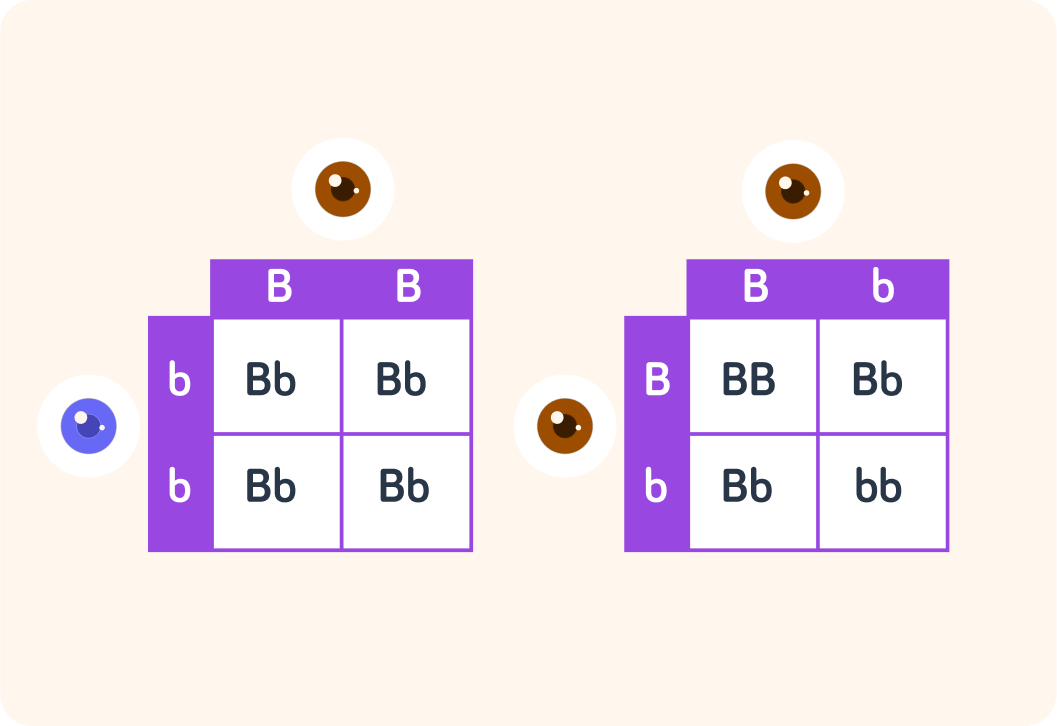
Look at the Punnett square to the left. What percentage of offspring have brown eyes?


Look at the Punnett square to the right. Give the genotype ratio of homozygote dominant to heterozygote to homozygote recessive genotypes.


So in these cases...
the parents where one has brown eyes and the other has blue eyes can only have brown-eyed offspring, but the other parents that both have brown eyes can have both brown-eyed and blue-eyed offspring. This is because of the difference in whether the parent genotypes are homozygotes or heterozygotes.

What is the ratio of phenotypes of brown eyes to blue eyes in the Punnet square to the right?
A) 1:2:1 B) 3:1 C) 1:3


With the genotypes BB, Bb, Bb, bb, how would you express direct proportion for the probability for blue eyed offspring?

Here is an incomplete Punnett square, which we are going to fill in.
If it helps, decide a trait you'd like this to represent.
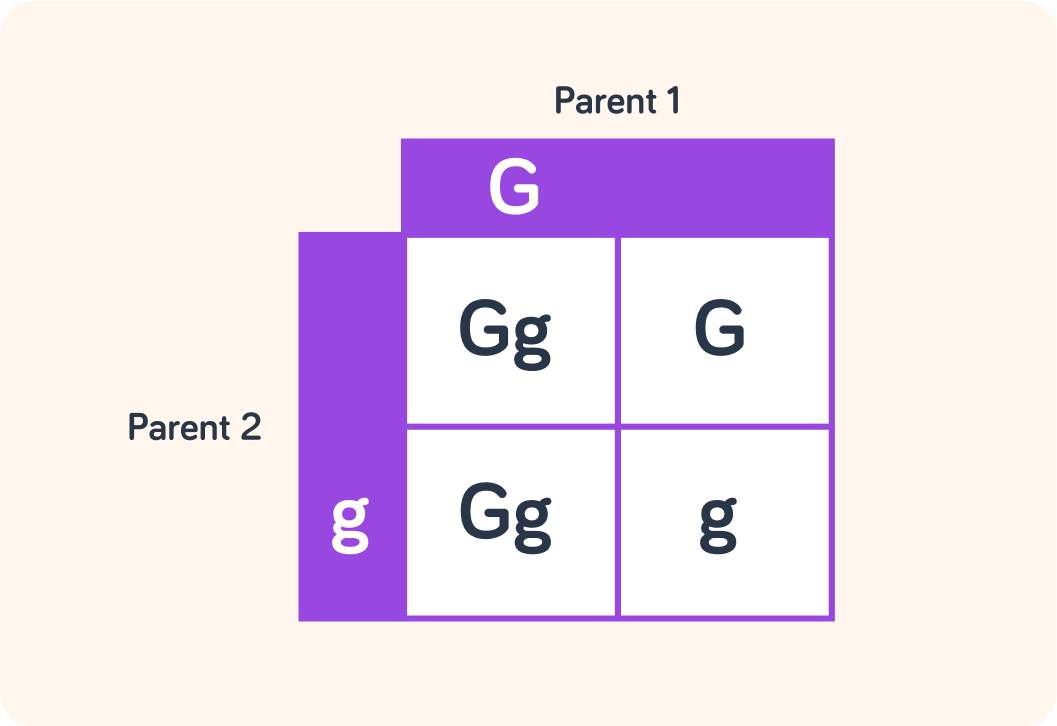
Have a good look at this incomplete Punnett square. What is the allele that is missing for parent 2? You should be able to work it out from looking at the offspring genotypes that have been filled in.


Now, what is the full genotype in the top-right offspring box?

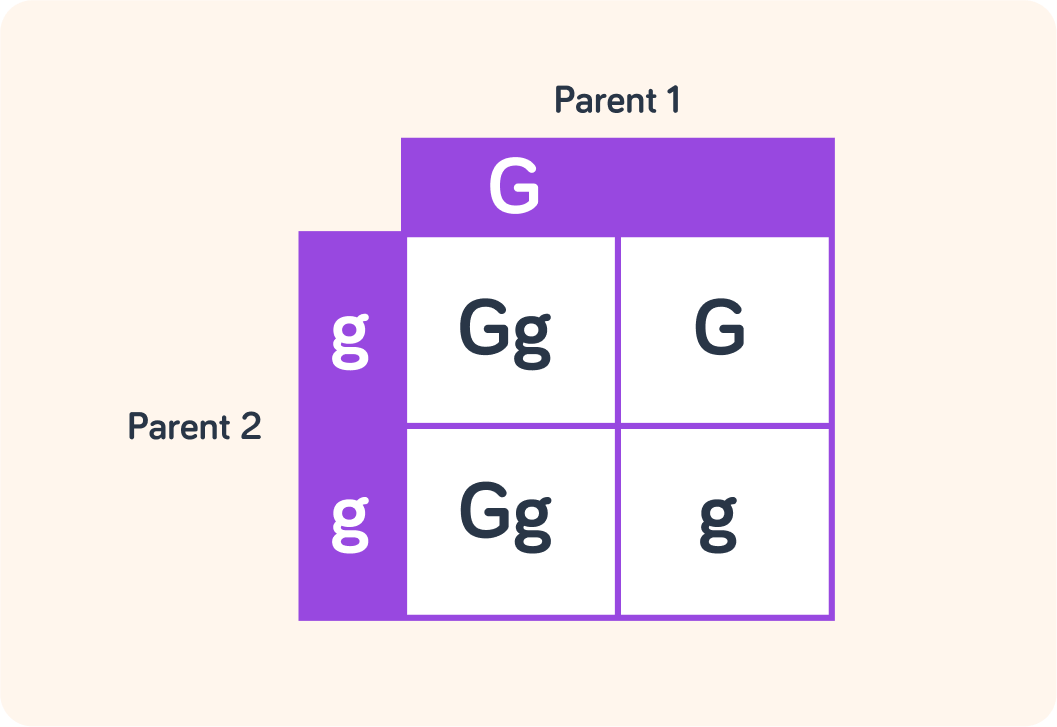
So what is the second allele for parent 1?

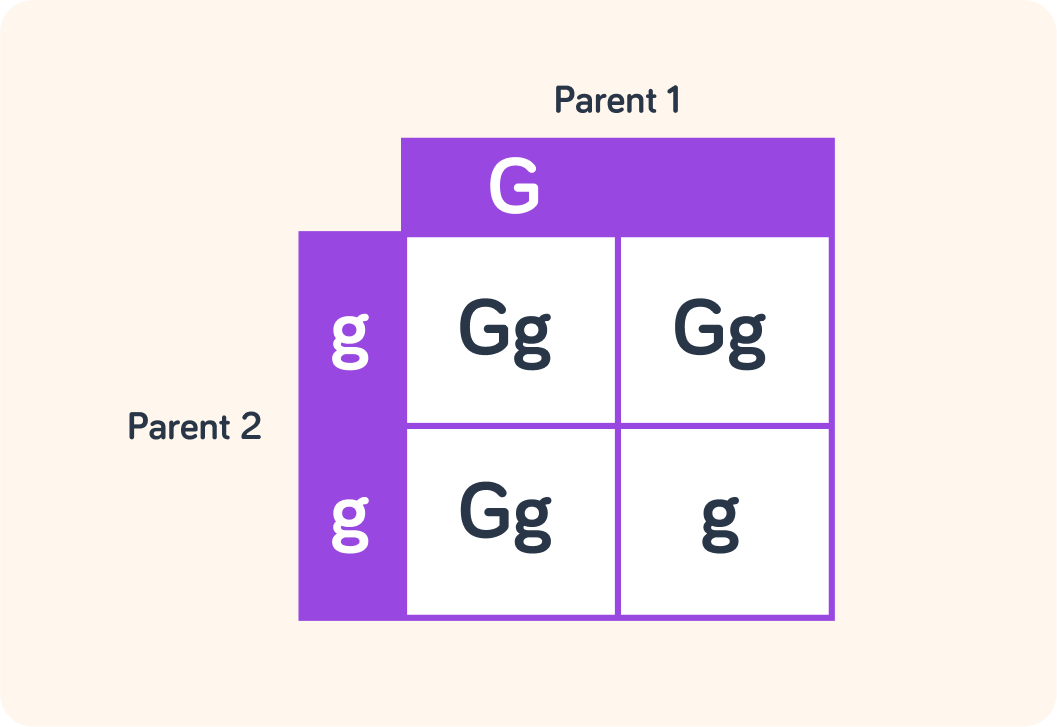
Finally, what is the full offspring genotype in the bottom-right box?

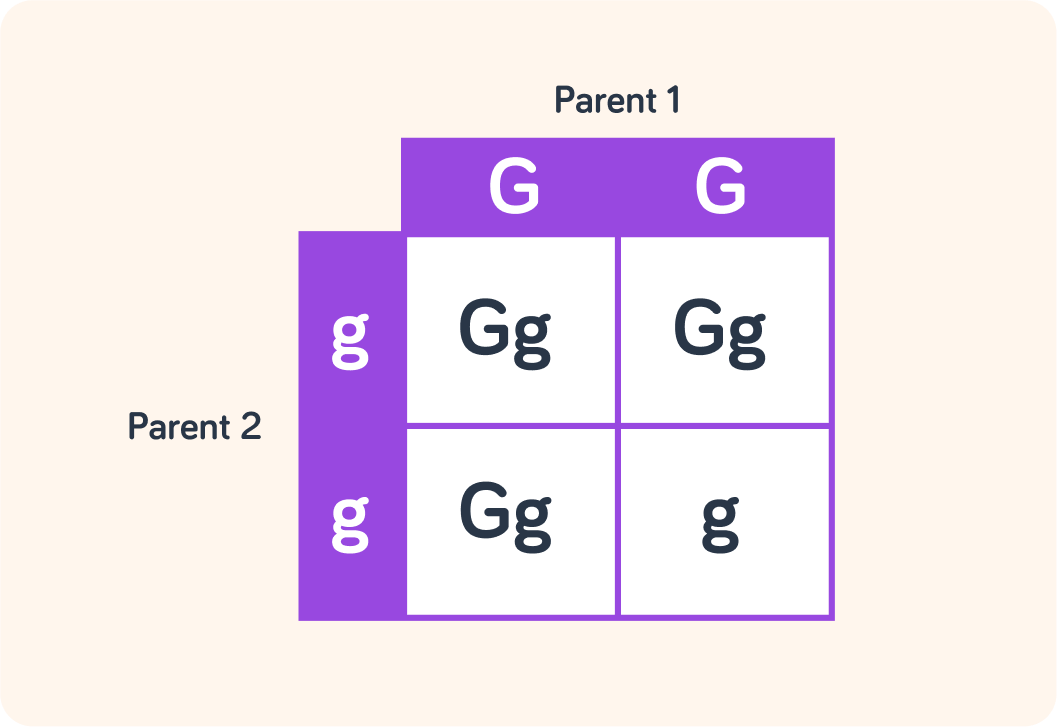
The bottom right hand box is Gg...
because we know that it is Gg, as we've just determined the second parental allele on the top row is G. This adds to our existing g allele to give another heterozygote.

So this is the Punnet square...
with all boxes filled in.

Now, let's take a look at interpreting family pedigrees for cystic fibrosis.
Cystic fibrosis is a recessive disease. This means that a person must have two recessive alleles to have the disease.
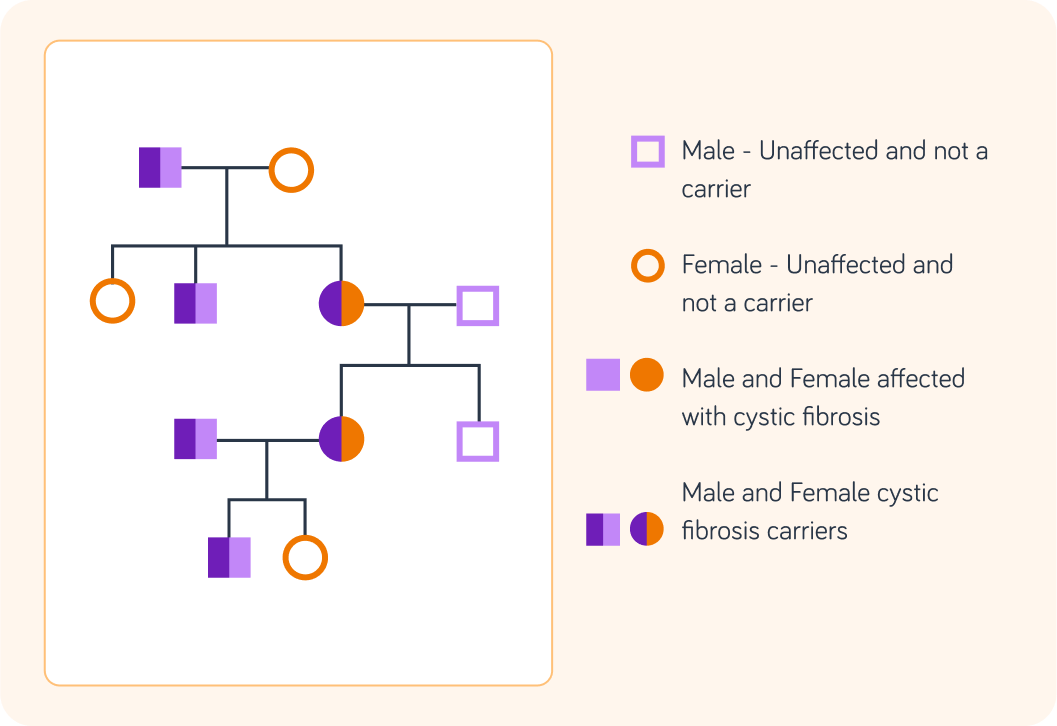
Using the key to determine the genotype of the top two shapes (the first set of parents), how many children were there in the first set of children?
A) Two B) Three C) Four


From left to right, what are the genotypes of the first set of offspring, if the alleles are F and f?
A) ff, Ff, Ff B) Ff, ff, Ff C) FF, Ff, Ff


What is the likelihood that the final generation of offspring had cystic fibrosis? Give your answer in percent.


The previous examples were of single gene crosses. These are easy enough to model with Punnett squares, but in reality, phenotypic traits are much more complex and are often controlled by multiple genes. With more genes involved, it gets trickier to model the outcome of the crosses.
Take a good look at these two Punnett squares.
The one on the left shows the trait plant height, controlled by a single gene, T. The one on the right shows the trait skin colour shade, controlled by two genes, A and B.
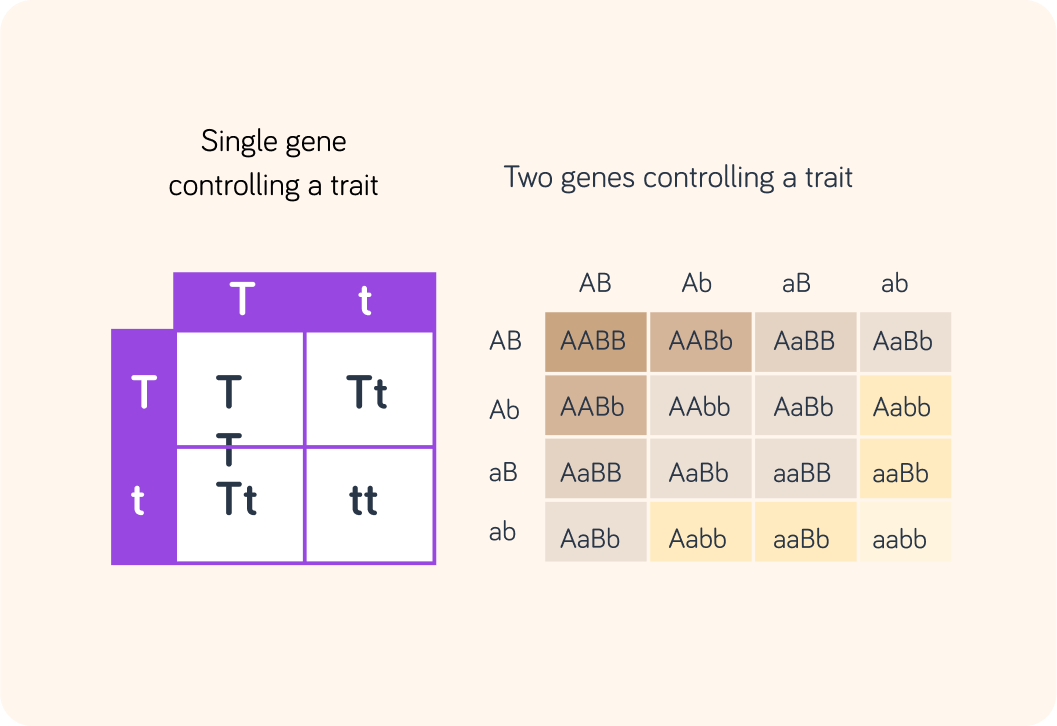
How many more possible genotypes are there when two genes are controlling a trait, compared to when only a single gene controls the trait?


The ratio of skin colour phenotypes in this picture is a dihybrid
Dihybrid means that there are two genes from each parent interacting, both heterozygote. The phenotype ratio that emerges for a dihybrid is always 9:3:3:1

The are 9 genotypes that have a dominant allele for both genes
They come in four variations: AABB, AABb, AaBB and AaBb.

There are 3 genotypes that have a dominant A allele and only recessive b alleles
They come in two variations: AAbb, Aabb

There are 3 genotypes that have a dominant B allele and only recessive a alleles
They come in two variations: aaBB, aaBb

There is just 1 genotype that has recessive alleles for both a and b
It is genotype aabb.

Which of these statements is true about polygenic crosses compared to single gene crosses? Pick all the correct options.

You can select multiple answers
